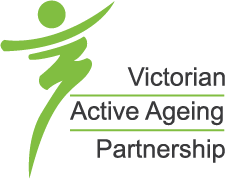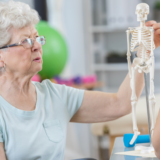Organisations – Neighbourhood Houses
Positive ageing
Helpful tips:
- Make sure that all promotional pictures/images of older people are realistic, demonstrate diversity and are relevant to the local context (e.g. don’t have an image showing older people of only white, Anglo-Celtic background in an area of ethnic and cultural diversity).
- Ensure that staff and tutors, who may be the first point of contact for older people, are welcoming and supportive (as the first contact is very important).
- Involve older people themselves in your staff and tutor training and induction re: working with older people. Some of the older people in your neighbourhood house would be valuable in passing on useful advice from their own and others’ experiences.
- Seek regular informal and formal feedback from the older people in your neighbourhood house to check that they feel valued, respected and welcomed by all staff and tutors.
- Inform staff and tutors about other issues that may become apparent when dealing with older people; e.g. elder abuse, financial hardship.
- When developing a policy, vision or organisational statement re: your neighbourhood house working positively with older people, here are three examples from different levels which may be useful or could be adapted:
1. Warrnambool City Council Statement from Active Ageing Plan:
Vision Council will value the role of older people and seek to provide opportunities for active participation in a broad range of community activities
Action Identify, recommend and promote opportunities for older residents to maximise their quality of life in the City of Warrnambool.
2. Shire of Indigo Ageing Well Strategy 2019-2023
A vision has been developed to guide Indigo Shire in its focus on ageing well over the next four years. It reflects Council’s strong commitment to supporting all Indigo Shire residents to live and age well within the community.
Our vision is:
‘Indigo Shire residents are connected and engaged with the community as they grow older; age is no barrier to inclusive, respectful and accessible participation.’
View the Indigo Ageing Well Strategy 2019-2023.
3. WHO Global Strategy and Action Plan on Ageing and Health
The strategy’s vision is a world in which everyone can live a long and healthy life. This world will be a place where functional ability is fostered across the life course and where older people experience equal rights and opportunities and can live lives free from age-based discrimination.
View the WHO Global Strategy and Action Plan on Ageing and Health.
Resources:
- Videos to use for staff training and discussion:
- VAAP online PD modules, ‘Engaging older people in physical activity’
- RACV – Physical activity for older people
- The George Institute –Active beyond running
- VAAP Research and Practice Forum – Evidence-based best practice framework for the engagement of older people in physical activity
- Victorian Active Ageing Partnership Research and Practice Forums – Films of key presentations
- ‘YouMeUs Achieving Inclusion’ online training for fitness/leisure centres and neighbourhood houses
- Council of the Ageing Victoria (COTA)
- COTA ‘Challenging Ageism’ booklet
- Seniors Online
- National Ageing Research Institute
- Healthy Ageing Network
- WHO Active Ageing resources
- City of Boroondara ‘Supporting Volunteers to Take an Active Service Approach’
- Eastern Sector Development Team – Various relevant videos
A ‘fair go’ for all
Helpful tips:
- A written policy, vision or organisational statement should clearly define to which groups of people the statement applies, who in the organisation should manage such matters and how they should be managed.
- Inform staff and tutors of the strategies outlined in the VAAP ‘Engaging under-represented groups of older adults in organised physical activity’ document.
- All staff and tutors are aware of the agreed actions within the organisation to promote the inclusion of people experiencing social or financial disadvantage/hardship.
- Check the availability of any local council community buses to assist with transport.
- One Victorian local council classified attendance by an older person at a physical activity session as a ‘medical appointment’, thereby qualifying for transport in the council bus.
- Other ways of reducing the cost of your activities might be:
- running a variety of physical activities, some of which have no or minimal costs (e.g. have a no-cost Heart Foundation walking group as one of your activities)
- asking local businesses to sponsor a number of older people (without identifying individuals)
- involving trained and supervised volunteer tutors instead of (or to work alongside) professional staff
- offering discounts for concession card holders.
Resources:
Access to volunteers
Helpful tips:
- Speak to someone at another local organisation that uses volunteers and get some advice on how they work with them.
- Chat to some of your regular older participants and see if they would be willing to support and encourage new and less confident participants. If they are willing, discuss how this might best work and what might be some of the common concerns of older participants. Some older people might be more suited to the role of buddy or mentor than others.
- Might there be a relevant group of students (e.g. fitness instructors, physiotherapists, etc) that might be willing to help out and gain experience at the same time?
Resources:
- Volunteering Victoria website (including a ‘Managing Volunteers’ toolkit
Professional input
Helpful tips:
- Relevant professional bodies or associations (e.g. Fitness Australia or Physical Activity Australia) might be a source of advice and expertise, if needed.
- Physiotherapy, exercise physiology and occupational health staff at the local community health service might be able and willing to provide advice and guidance.
- If advice around specific chronic health conditions is required, contact peak organisations such as the Heart Foundation; Musculoskeletal Australia; Asthma Foundation, etc.
Resources:
Participant recruitment pathways
Helpful tips:
- As a starting point, your local council will most likely have a list of local organisations that work with older people.
- Visit local organisations that work with older people and inform them about what your neighbourhood house offers.
- Invite staff and/or their older clients from local organisations to your neighbourhood house so they have an understanding of what’s available.
- Inform staff and tutors about the strategies outlined in the VAAP ‘Engaging under-represented groups of older adults in organised physical activity’ document.
- Other local organisations may have successful arrangements in place to facilitate the engagement of older into their programs.
- Current older participants might be aware of other local organisations that may wish to assist their clients into physical activity opportunities.
- Assessment teams, community leaders and GPs may act as points of referral to physical activity programs for socially isolated and disadvantaged participants.
- Intentionally building links with community groups and support agencies which are in contact with socially disadvantaged older people can facilitate program awareness and attendance.
Resources:
- View the VAAP resources around ‘Building successful partnerships to promote physical activity among older people’
- VAAP document ‘Transition pathways – Key elements to maximise the sustainability of exercise’
Comfortable and safe venues
Resources:
- A venue checklist should cover aspects such as physical access, seating, lighting, privacy, temperature control, security, availability of toilets, suitability and safety of floor coverings, etc
- List of requirements for physical accessibility
- Sport and Recreation Victoria: Overview of Universal Design
- Centre for Excellence in Universal Design (in Ireland)
- Community Travel Training
Equipment and storage
Helpful tips:
- Be guided by equipment manufacturers’ guidelines as to the frequency of equipment safety and quality checks and maintenance, and have clear roles and responsibilities around this process.
Change rooms
Helpful tips:
- Consider other venue options if the change-room facilities are not adequate, or inquire about the possibility of necessary improvements being undertaken (e.g. in local council-run facility).
- A venue checklist should cover aspects such as physical access, seating, lighting, privacy, temperature control, security, availability of toilets, suitability and safety of floor coverings, etc.
Resources:
Risk management
Helpful tips:
- Risk categories that might be covered in a risk management plan might include strategic/planning; social/political, demand management; duty of care to clients; financial/budgetary; operational; physical assets/infrastructure; personnel; compliance/governance.
- Steps in a risk management process include identifying risks; analysing the likelihood and potential consequences of risk; evaluating the risks; treating the risks and then ongoing monitoring and reviewing of risks and treatment strategies.
Resources:
Staff/Volunteer development
Helpful tips:
- Involve older people themselves in your staff/volunteer training and induction re: working with older people. Some of the older people in your organisation would be valuable in passing on useful advice from their own and others’ experiences.
- Inform staff/volunteers about other issues that may become apparent when dealing with older people; e.g. elder abuse, financial hardship.
- Inform staff/volunteers about the strategies outlined in the VAAP ‘Engaging under-represented groups of older adults in organised physical activity’ document.
- Identifying skill gaps and arranging training and/or support to improve the competencies of leaders to adapt programs to meet the social, cultural, behavioural and health needs of social disadvantaged participants.
- Incorporating cultural competency and disability inclusion in training and professional development can be valuable.
Resources:
- Videos to use for staff training and discussion:
- VAAP online PD modules, ‘Engaging older people in physical activity’
- RACV – Physical activity for older people
- The George Institute –Active beyond running
- VAAP Research and Practice Forum – Evidence-based best practice framework for the engagement of older people in physical activity
- Victorian Active Ageing Partnership Research and Practice Forums – Films of key presentations
- ‘YouMeUs Achieving Inclusion’ online training for fitness/leisure centres and neighbourhood houses
- Council of the Ageing Victoria (COTA)
- COTA ‘Challenging Ageism’ booklet
- Seniors Online
- National Ageing Research Institute
- Healthy Ageing Network
- WHO Active Ageing resources
- City of Boroondara ‘Supporting Volunteers to Take an Active Service Approach’
- Eastern Sector Development Team –Various relevant videos
- Volunteering Victoria website (including a ‘Managing Volunteers’ toolkit)











